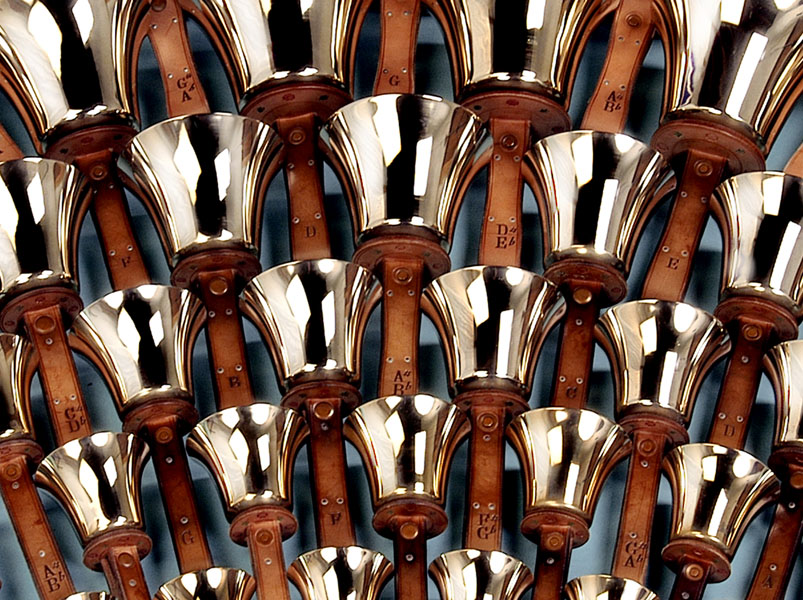
Last month we shared that the Whitechapel bell foundry, one of the most prominent makers of bells in the world (Big Ben and the Liberty Bell among them) is set to close in May. That story prompted this response from one of our readers in New York, Andre Smith.
My introduction to English handbells was sixty-six years ago during a performance on The Garry Moore Show telecast in its first season from New York in 1950. The ringers were based in Brick Presbyterian Church in Manhattan. The conductress was Doris Watson (Her book on handbell ringing is still readily available online and the original print edition of this book includes a picture of the Brick ringers.) The Church remains in possession of its Whitechapel bells, now silently stored in boxes in a tower closet that remains off-limits.
I was immediately enthralled with both the sound and the idea that ringers of handbells played only one or two pitches which, together, formed the whole. The only other way of approaching a complete composition in such a manner with which I was then familiar was that of the Russian horn band, founded in 1750 in Saint Petersburg (watch them here). And that was also the point in time during which my interest in handbells, otherwise unknown widely in The United States in that era, began its dormancy.
In 1970 a friend of mine who ran his own music shop in Baltimore acquired twenty-five used Whitechapel bells as a part of an estate sale. Believing, quite rightly, that there was in that time no local market for these instruments, he offered the whole two octaves to me for $100! Considering their source and the family recollections he had been given with the bells, our speculation then was that they had been cast sometime between 1950 and 1961. This set later served me, but not always well, suspended individually as a carillon I had designed in 1982. It remained their basic mount until my wife decided in 2009 to buy the entire Whitechapel catalogue of seventy-eight bells for me as a birthday gift.
Before her death in June 2013 she significantly enhanced the bell fund to permit me, in continuum, to buy whatever quantity of bells will be required to make this instrument as full as possible. The count to date is two-hundred-forty-one bells; about half of which are in designs and custom pitches unique to this instrument.
There are several other distinctive features of this carillon as it’s currently developing. Among them are;
- First, it’s the only carillon of its kind in the world.
- Second, singularity aside, when finished it also will be the largest instrument of its kind. The frame from which the entire ensemble is currently suspended is 5′ deep x 8′ wide x 7′ high. Its present form has taken five years (2010-15) to reach.
The future? I’ll play the seer here on only one point : Faoiteséipéal go Brách!

